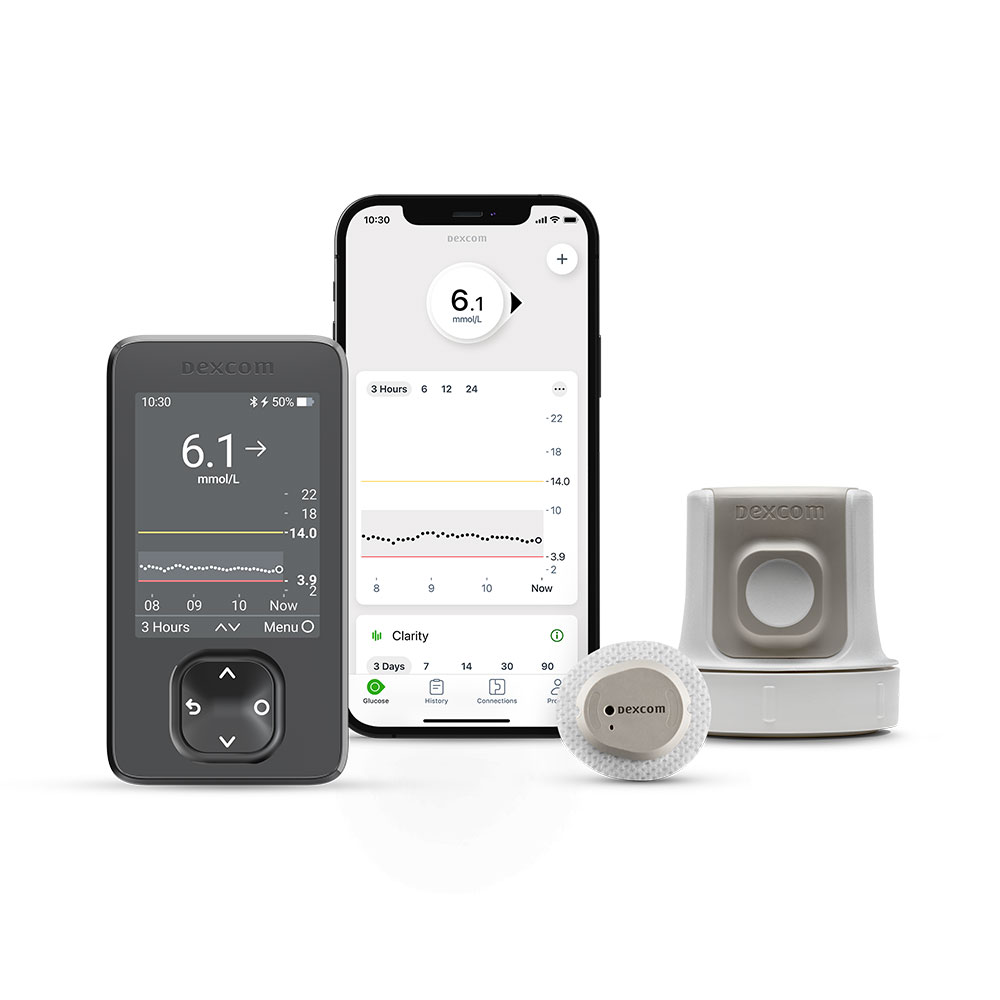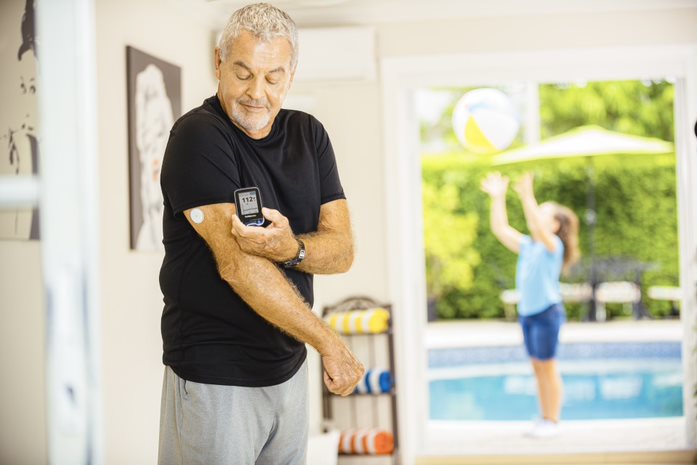June 11, 2024
Insulin Pumps and CGMs: A Complete Guide for Diabetes Management
How much is a CGM? How is an insulin pump different than a CGM? Get answers to these question and more in this product breakdown.
Share This Story
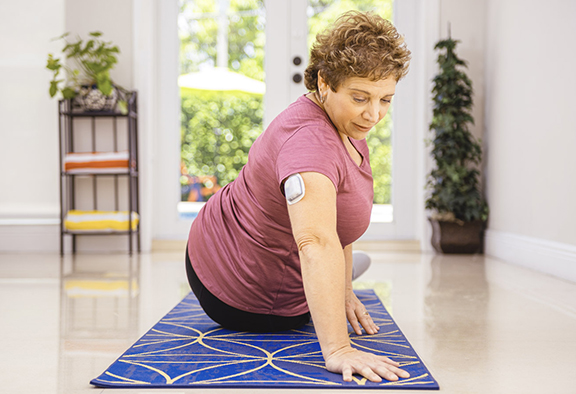
The Difference Between an Insulin Pump and CGM
If you’ve recently been diagnosed with diabetes, there’s a good chance you’ve encountered several unfamiliar terms in a short time. As part of this, you may have read about two devices used to help manage diabetes: insulin pumps and continuous glucose monitors (CGMs).
While CGMs and insulin pumps can both help people with diabetes, they perform two very different tasks. But do you need an insulin pump and CGM, one of these devices, or neither? Instead of trying to learn more about these products from CGM/insulin pump reviews, take a look at US MED’s guide to insulin pumps and CGMs.
Understanding Insulin Pumps and CGMs
An insulin pump is a small device that delivers insulin into your body, providing both a steady flow of insulin (basal insulin) or quick insulin doses (bolus insulin) as needed. In contrast, a Continuous Glucose Monitor (CGM) is a system used to monitor glucose levels continuously, offering the advantage of unobtrusive glucose monitoring around the clock. Paired together (depending on the device used), they can offer a closed-loop system to help improve your overall diabetes management, more on that to follow.
Benefits of Insulin Pumps and CGMs
When used correctly, insulin pumps can simplify insulin delivery and enhance blood glucose control compared to traditional needle injections. Similarly, CGMs offer the convenience of checking glucose levels without the need for frequent finger prick testing, although traditional testing may still be necessary in certain situations. A few of these systems when paired together, a CGM and an insulin pump create a closed-loop system that can automatically adjust insulin delivery based on real-time glucose readings, leading to even tighter glucose control and potentially reducing the risk of hypoglycemia or hyperglycemia.
Costs and Insurance Coverage
Insulin pumps can be a significant investment, costing around $6,000 for the device itself, with additional annual expenses ranging from $3,000 to $6,000 for supplies. Similarly, CGM technology comes with its own costs, including replacement sensors and transmitters, which can range from $160 to $500 per month. However, many insurance providers now cover certain CGMs and related supplies, making them more accessible.
Partnering with a DME Supplier
Navigating the complexities of insurance coverage and pricing for insulin pumps and CGMs can be overwhelming. Partnering with a Durable Medical Equipment (DME) supplier like US MED can ease the burden. Our specialized team is experienced in navigating insurance plans and can help decipher coverage options, manage prior authorizations, and coordinate with insurance providers. We’re here to guide you through the process, empowering you to make informed decisions for your diabetes management journey.
Making Informed Choices
Speaking of informed decisions… While both insulin pumps and CGMs offer significant benefits, they serve different purposes. Using them together can optimize diabetes management, but it’s not necessary to use both. Whether you prefer manual insulin injections or dislike frequent finger prick tests, utilizing an insulin pump or CGM individually can still improve your diabetes management and save money.
Insulin Pump Brands
There are a few different manufacturers of insulin pumps on the market today. For the sake of simplicity, we’ll focus on two of the leading brands in this space: Tandem’s t:slim X2 and Insulet’s OmniPod.
Tandem t:slim X2
Tandem’s t:slim X2 pump exemplifies “traditional” insulin pump design. When using these pumps, you’ll carry a small device wherever you go, connected to your body through the use of infusion sets. But there’s no need to worry – despite their traditional setup, the t-slim pumps remain discreet and convenient (and it’s compatible with Dexcom G6, G7 and Freestyle Libre 2+).
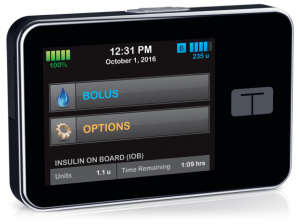
Insulet OmniPod
In contrast, Insulet’s OmniPod offers a unique approach to insulin pump technology. Users of this system utilize “Pods” – tubeless pumps affixed directly to the body. If you prefer the advantages of insulin therapy without the hassle of carrying a separate device, the OmniPod line could be the perfect fit for you. And to go one step further, the Omnipod 5 system does have a closed loop system with the Dexcom G6 CGM.
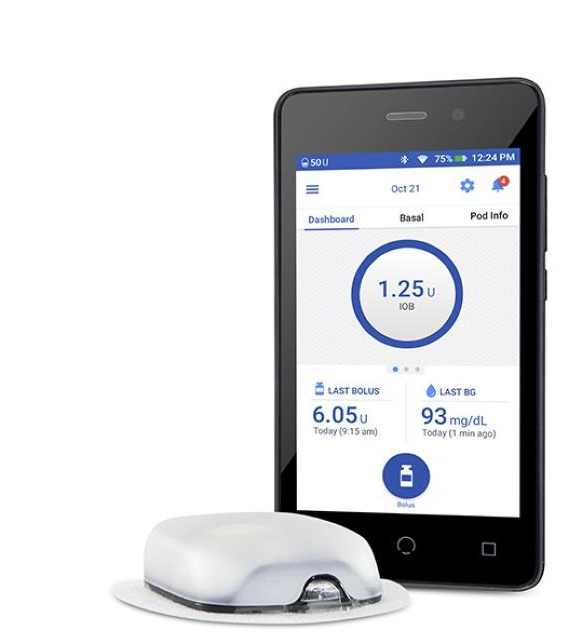
CGM Brands
Unsurprisingly, there are also several different companies offering CGM systems. Here are two of the most popular brands in this category:
Dexcom
As the second company to introduce an FDA-approved CGM, Dexcom has earned a reputation for delivering top-notch glucose monitoring solutions. Dexcom’s flagship CGM, the Dexcom G6, offers updated glucose readings every five minutes, alerts for high or low blood sugar levels, and a host of other features. Additionally, Dexcom unveiled its latest innovation this past year, the Dexcom G7 CGM system. This next-generation device promises enhanced accuracy, improved comfort, and even greater convenience for users, representing a significant advancement in continuous glucose monitoring technology.
FreeStyle Libre
Abbot’s FreeStyle Libre is a true innovator in the world of CGMs. The original FreeStyle CGM was approved in 2017 and was the first CGM that didn’t need measurements or fingerstick calibration. Today, products available in this line include the Freestyle Libre 14 day, and the FreeStyle Libre 2 system. The Freestyle Libre 2 system offers enhanced features like optional real-time alarms for hypoglycemia and hyperglycemia without fingerstick confirmations, and the FreeStyle Libre 3 system, which represents the latest advancement in the series. The FreeStyle Libre 3 system boasts the smallest sensor of any 14-day systems and provides the most accurate glucose readings, offering users unparalleled convenience and accuracy in continuous glucose monitoring. Abbott’s latest CGM launched is the Freestyle Libre 2 Plus system which is their first CGM that fully integrates as a closed loop system with the Tandem Tslim X2 insulin pump.
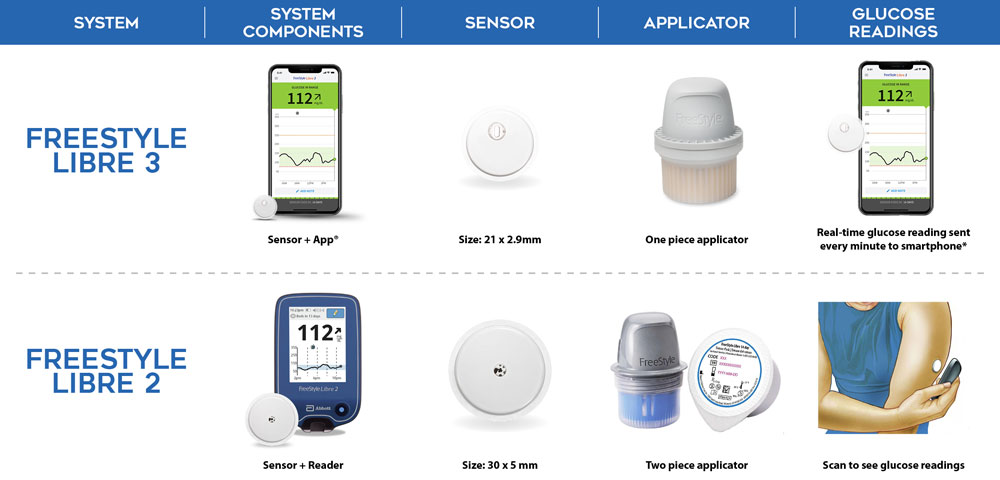
How does an insulin pump work?
When you start using an insulin pump, it’s programmed to meet your diabetes treatment requirements. After receiving training, a trained professional will set up the pump to deliver insulin into your fatty tissue through a small tube called a cannula. Some infusion sets may use a needle instead of a cannula under the skin. It’s recommended to replace your infusion set every two to three days to prevent infection. Consult your healthcare provider for guidance.
Benefits of Insulin Pumps for Blood Sugar Control
Research suggests that insulin pump usage offers more than just convenience. These devices may facilitate better diabetes control and reduce the risk of hypoglycemia. To maximize the benefits, share your pump data with your healthcare team for personalized adjustments to your treatment plan.
How does a CGM work?
Before using a CGM, you’ll insert a tiny wire (sensor) by way of a small needle under your skin, typically on your stomach or back of upper arm. This sensor continuously measures glucose levels in the fluid surrounding your cells, and a transmitter wirelessly sends readings to your receiver, smartphone*, or insulin pump.
Benefits of CGMs for Continuous Glucose Monitoring
CGM usage can make type 1 and type 2 diabetes easier to manage since these devices provide “snapshots” of your glucose levels throughout the day and night. You’ll get a significantly larger amount of data from these systems compared to the few readings a day that standard fingerprick testing offers. Some CGMs can also tell you when your glucose levels are dangerously high or low and the alarm is intended to wake you up when your glucose is approaching dangerous lows or highs.
Can an insulin pump be used with a CGM?
Though you don’t need to use an insulin pump with a CGM, it may be a good idea to do so. When you use both of these devices, you’ll benefit from easy glucose monitoring and insulin delivery. You can even use an insulin pump that fully integrates with CGM to create a “closed-loop system,” in which your insulin pump releases insulin whenever your CGM detects a need for it.
Best insulin pump and CGM
Every CGM and insulin pump available today is different, so it’s difficult to say which of these products is the “best.” That said, here are a few options for people with diabetes to consider who may want to add these devices to their treatment regimen:
Best insulin pump: Tandem t:slim X2
With its sleek design and cutting-edge technology, the Tandem t:slim X2 stands out as the top choice for an insulin pump. Offering a high-contrast color touch screen, a slim profile with a flat insulin cartridge, and watertight construction, it ensures ease of use and durability. Its Micro-Delivery® technology allows precise insulin dosing, while advanced Bluetooth connectivity enables communication with various devices. Integrated features like the Bolus Calculator and compatibility with the Dexcom G6 through Control IQ software make it a comprehensive solution for diabetes management.
Best CGM: Dexcom G7
The Dexcom G7 emerges as the top choice for continuous glucose monitoring (CGM) systems. With its ability to deliver reliable glucose readings consistently, even in the presence of acetaminophen†, it ensures accurate monitoring throughout the day. Moreover, the Dexcom G7 integrates seamlessly with the Tandem t:slim X2, allowing users to harness the power of both devices to create a closed-loop system for enhanced diabetes management.
Where to buy insulin pumps and CGMs
Whether you’re planning to buy a CGM, insulin pump, or both, the number-one supplier of these products is US MED. Take a look at what we have for sale in these categories, along with other items like insulin pens and diabetes testing supplies!
*For a list of compatible smartphone devices visit omnipod.com/compatibility.
†Acetaminophen doses higher than 1g every six hours can affect your readings.
Source: https://www.niddk.nih.gov/health-information/diabetes/overview/managing-diabetes/continuous-glucose-monitoring


